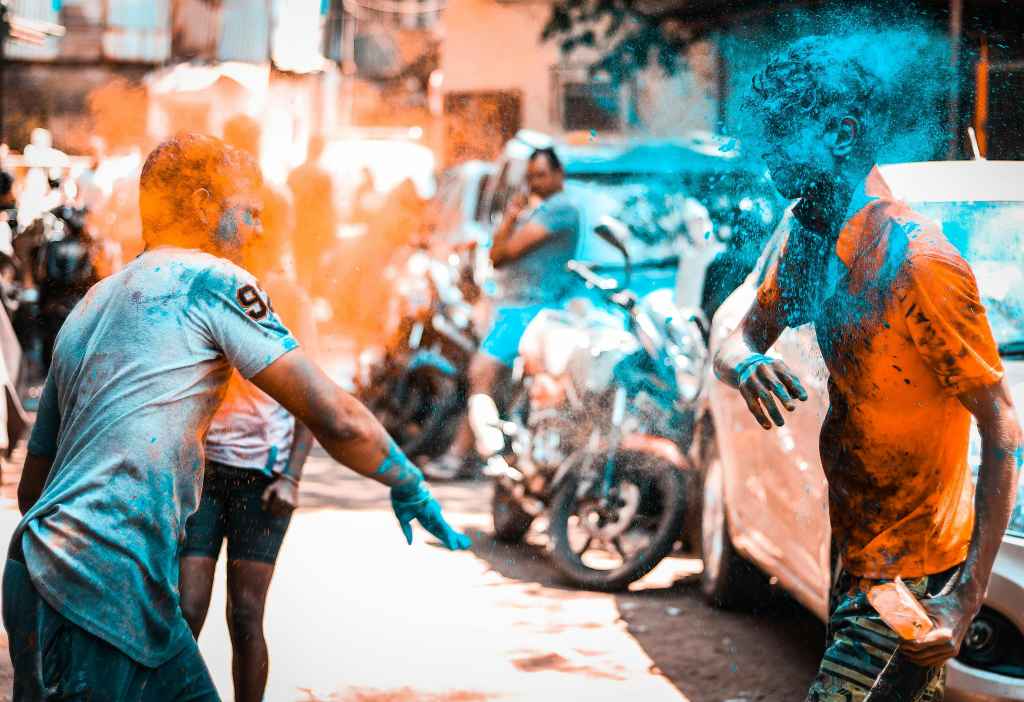The Gulag Doctors: A Tale of Two Oaths
Ah, the Gulag. The very word conjures images of frozen wastelands, backbreaking labor, and a chilling disregard for human life. Thanks to writers like Aleksandr Solzhenitsyn, whose own experiences in the camps fueled his powerful prose, we tend to think of the Gulag system as pure, unadulterated evil. And who could blame us?
But what about the doctors who worked within this system? Were they willing cogs in a brutal machine, or something else entirely? This is the question at the heart of historian Sean Healey’s fascinating book, “The Gulag Doctors: Health, Survival and the Perils of Medicine in Stalin’s Camps.” You see, Healey reckons Solzhenitsyn, while a literary genius, might have oversimplified things a tad. Healey wants to pull back the curtain and show us the messy, complicated reality of Gulag medicine.
Playing Doctor in Hell: A Balancing Act?
Imagine for a second: you’re a doctor in the Gulag. On one hand, you took an oath to heal, to alleviate suffering. On the other hand, you’re surrounded by unimaginable cruelty, a system more interested in meeting production quotas than preserving human life. Talk about a rock and a hard place, am I right?
Healey argues that to understand these doctors, we gotta ditch the whole black-and-white thinking. Most weren’t mustache-twirling villains, but they weren’t exactly saints either. They existed in what Healey calls a “grey zone,” forced to make impossible choices in a system designed to crush the human spirit. They were both victims of the regime and, in some ways, complicit in its horrors.
From Med School to the Gulag Archipelago: Not Your Average Internship
The Gulag wasn’t just a monstrous prison system; in a strange way, it was also a massive, macabre medical training ground. Young doctors, fresh out of school and eager to make their mark, found themselves shipped off to remote corners of the Soviet empire. Talk about a crash course in “real-world” experience, eh?
Healey dives deep into the archives, unearthing tales of these doctors, their motivations, and the compromises they made. Some were true believers in the Soviet project, their idealism blinding them to the system’s flaws. Others saw the Gulag as a stepping stone, a chance to climb the professional ladder. And then there were those who simply ended up there by circumstance, swept up in the maelstrom of Stalin’s purges.
What’s clear is that for many of these doctors, the Gulag was a crucible, testing their skills, their ethics, and their very humanity. Healey doesn’t shy away from the tough questions: How could they treat patients while simultaneously participating in a system that devalued human life? Did their actions, however compromised, ultimately save lives that might have otherwise been lost?
When Science Goes Sideways: The Radium Debacle
Now, let’s talk about Yakov Kaminsky, a doctor with a thirst for knowledge…and maybe a little too much faith in the healing power of radium. See, Kaminsky was convinced that these radioactive waters held the key to curing all sorts of ailments. Problem was, he wasn’t exactly big on informed consent or, you know, basic safety protocols. Oops?
The results, as you can imagine, were less than ideal. Instead of miraculous cures, Kaminsky ended up giving a whole community a nasty case of radiation poisoning. Talk about a “my bad” for the ages. It’s a stark reminder that even with good intentions, unchecked ambition and a disregard for ethical boundaries can have devastating consequences.
The Gulag Doctors: A Tale of Two Oaths
Ah, the Gulag. The very word conjures images of frozen wastelands, backbreaking labor, and a chilling disregard for human life. Thanks to writers like Aleksandr Solzhenitsyn, whose own experiences in the camps fueled his powerful prose, we tend to think of the Gulag system as pure, unadulterated evil. And who could blame us?
But what about the doctors who worked within this system? Were they willing cogs in a brutal machine, or something else entirely? This is the question at the heart of historian Sean Healey’s fascinating book, “The Gulag Doctors: Health, Survival and the Perils of Medicine in Stalin’s Camps.” You see, Healey reckons Solzhenitsyn, while a literary genius, might have oversimplified things a tad. Healey wants to pull back the curtain and show us the messy, complicated reality of Gulag medicine.
Playing Doctor in Hell: A Balancing Act?
Imagine for a second: you’re a doctor in the Gulag. On one hand, you took an oath to heal, to alleviate suffering. On the other hand, you’re surrounded by unimaginable cruelty, a system more interested in meeting production quotas than preserving human life. Talk about a rock and a hard place, am I right?
Healey argues that to understand these doctors, we gotta ditch the whole black-and-white thinking. Most weren’t mustache-twirling villains, but they weren’t exactly saints either. They existed in what Healey calls a “grey zone,” forced to make impossible choices in a system designed to crush the human spirit. They were both victims of the regime and, in some ways, complicit in its horrors.
From Med School to the Gulag Archipelago: Not Your Average Internship
The Gulag wasn’t just a monstrous prison system; in a strange way, it was also a massive, macabre medical training ground. Young doctors, fresh out of school and eager to make their mark, found themselves shipped off to remote corners of the Soviet empire. Talk about a crash course in “real-world” experience, eh?
Healey dives deep into the archives, unearthing tales of these doctors, their motivations, and the compromises they made. Some were true believers in the Soviet project, their idealism blinding them to the system’s flaws. Others saw the Gulag as a stepping stone, a chance to climb the professional ladder. And then there were those who simply ended up there by circumstance, swept up in the maelstrom of Stalin’s purges.
What’s clear is that for many of these doctors, the Gulag was a crucible, testing their skills, their ethics, and their very humanity. Healey doesn’t shy away from the tough questions: How could they treat patients while simultaneously participating in a system that devalued human life? Did their actions, however compromised, ultimately save lives that might have otherwise been lost?
When Science Goes Sideways: The Radium Debacle
Now, let’s talk about Yakov Kaminsky, a doctor with a thirst for knowledge…and maybe a little too much faith in the healing power of radium. See, Kaminsky was convinced that these radioactive waters held the key to curing all sorts of ailments. Problem was, he wasn’t exactly big on informed consent or, you know, basic safety protocols. Oops?
The results, as you can imagine, were less than ideal. Instead of miraculous cures, Kaminsky ended up giving a whole community a nasty case of radiation poisoning. Talk about a “my bad” for the ages. It’s a stark reminder that even with good intentions, unchecked ambition and a disregard for ethical boundaries can have devastating consequences.
A Doctor’s Diary: Nikolai Glazov Bears Witness
Hold onto your hats, folks, because we’re about to meet a doctor whose story will stay with you: Nikolai Glazov. This dude wasn’t just treating sniffles in some cushy Gulag infirmary. No siree, Glazov was smack-dab in the middle of some of the most brutal camps, staring down death on a daily basis. And he kept a diary. Yeah, you heard that right. A diary.
Imagine reading Glazov’s account of rampant scurvy and pellagra, diseases of severe malnutrition, ripping through the camps. He’s fighting tooth and nail with practically no medicine, watching people wither away because the system just didn’t give a damn if they lived or died. His words paint a picture so bleak, so utterly devoid of hope, that it makes your soul hurt.
But here’s the thing about Glazov: even in the darkest depths of human misery, he never completely loses his humanity. He focuses on individual patients, their small victories, the tiny glimmers of resilience in the face of unimaginable suffering. It’s like he’s clinging to those moments, using them to stay sane amidst the madness.
But who was Nikolai Glazov, really? Was he a victim of circumstance, a pawn in a twisted game? Or did he, through his actions or inactions, become complicit in the system’s brutality? Healey lays out the evidence, leaving it to us, the readers, to grapple with these uncomfortable questions. And trust me, you’ll be grappling for a while.
The Gulag Doctors: More Than Meets the Eye
So, what’s the takeaway from all this? Well, Healey’s book is a stark reminder that history is rarely black and white. The Gulag doctors weren’t monsters, but they weren’t heroes either. They were human beings caught in an impossible situation, forced to make excruciating choices with often-devastating consequences.
By shining a light on their stories, their struggles, and their moral compromises, Healey challenges us to confront the complexities of human nature. He forces us to ask ourselves how we would have fared in their shoes. Would we have had the courage to resist? Or would we, like so many others, have been ground down by the system, our own humanity slowly chipped away until nothing remained but survival?
These are questions that resonate far beyond the frozen wastelands of the Gulag. They are questions that speak to the very core of what it means to be human in a world where even the most noble professions can be twisted and corrupted by power. And those, my friends, are questions worth pondering.



